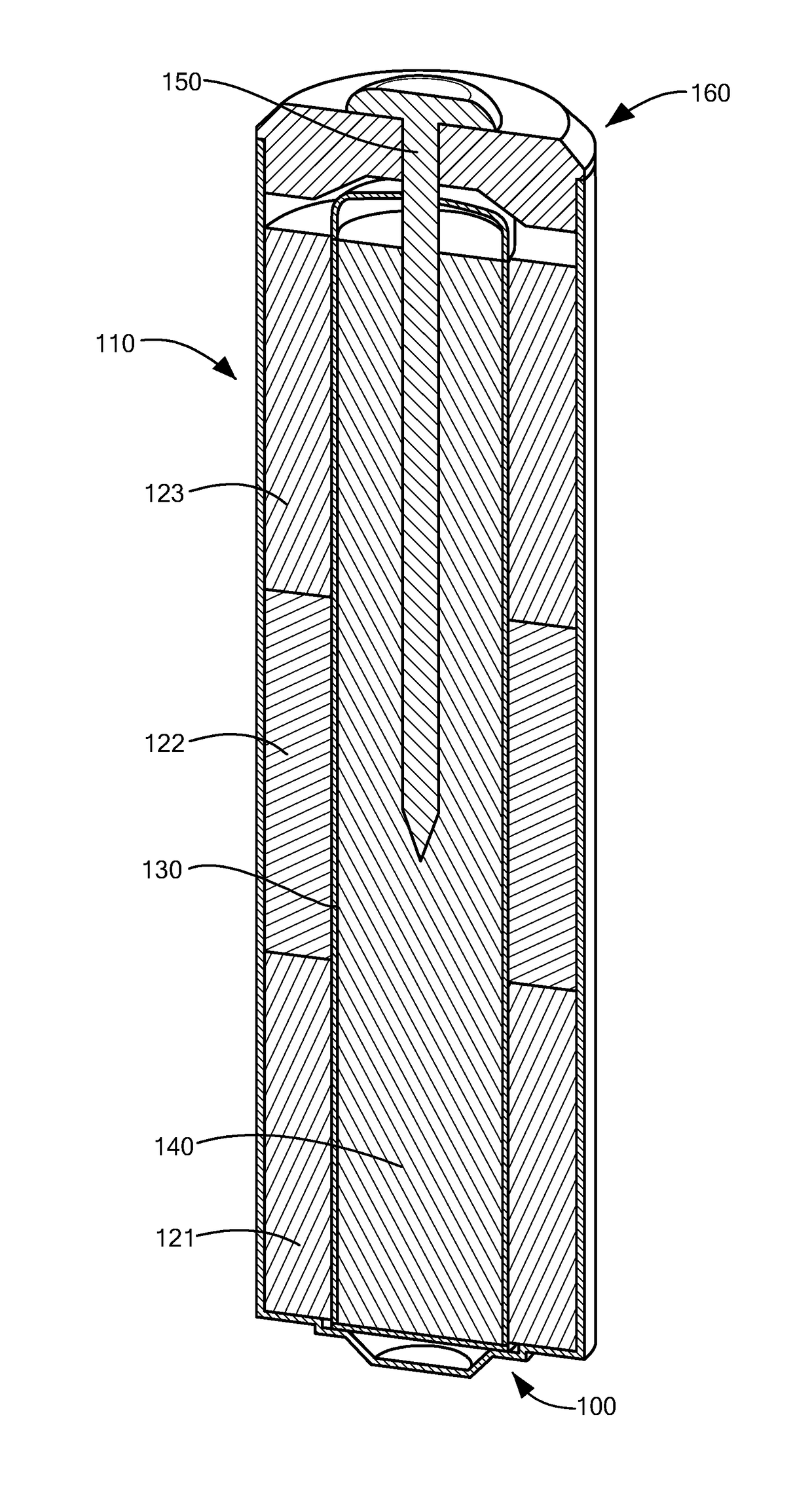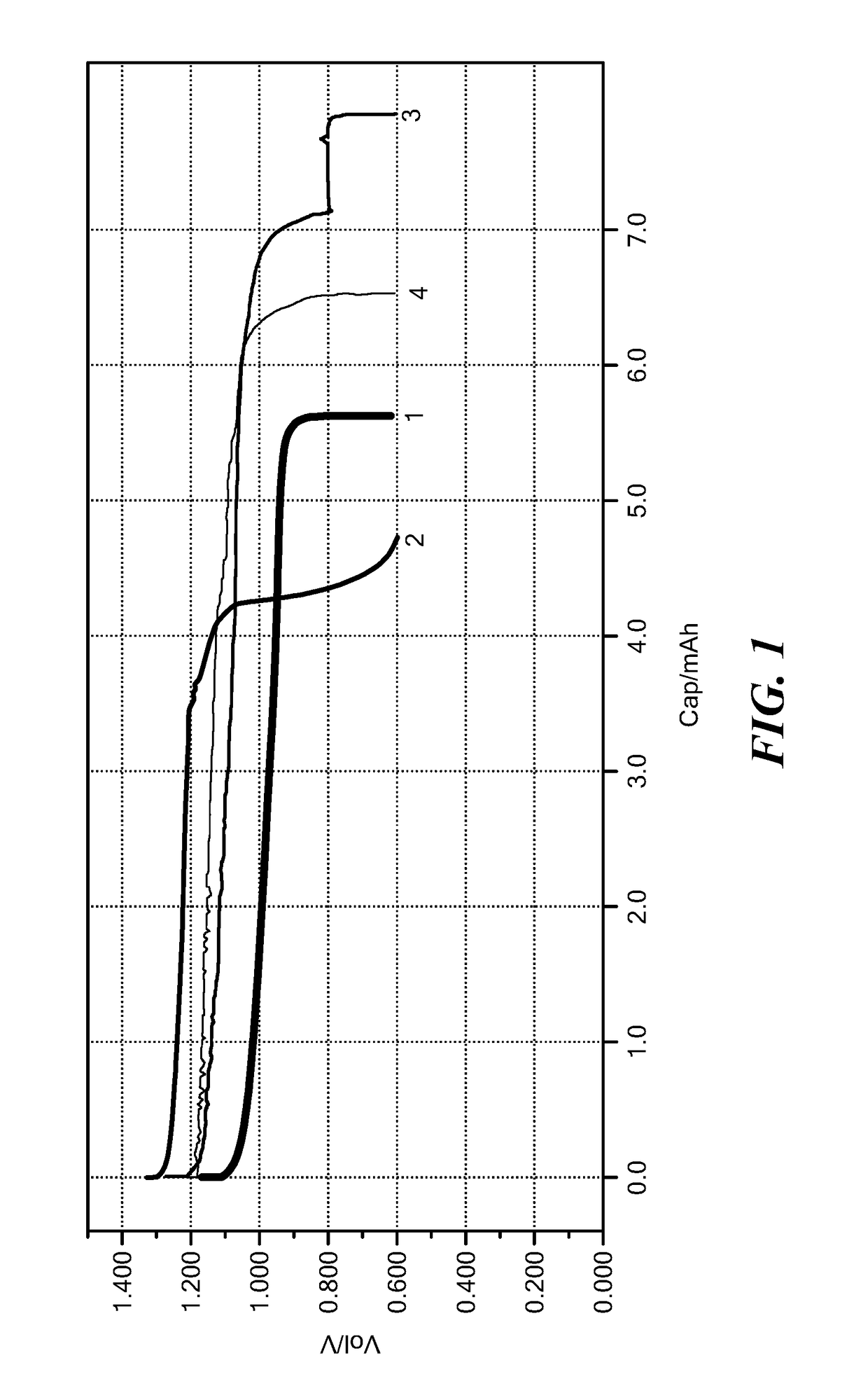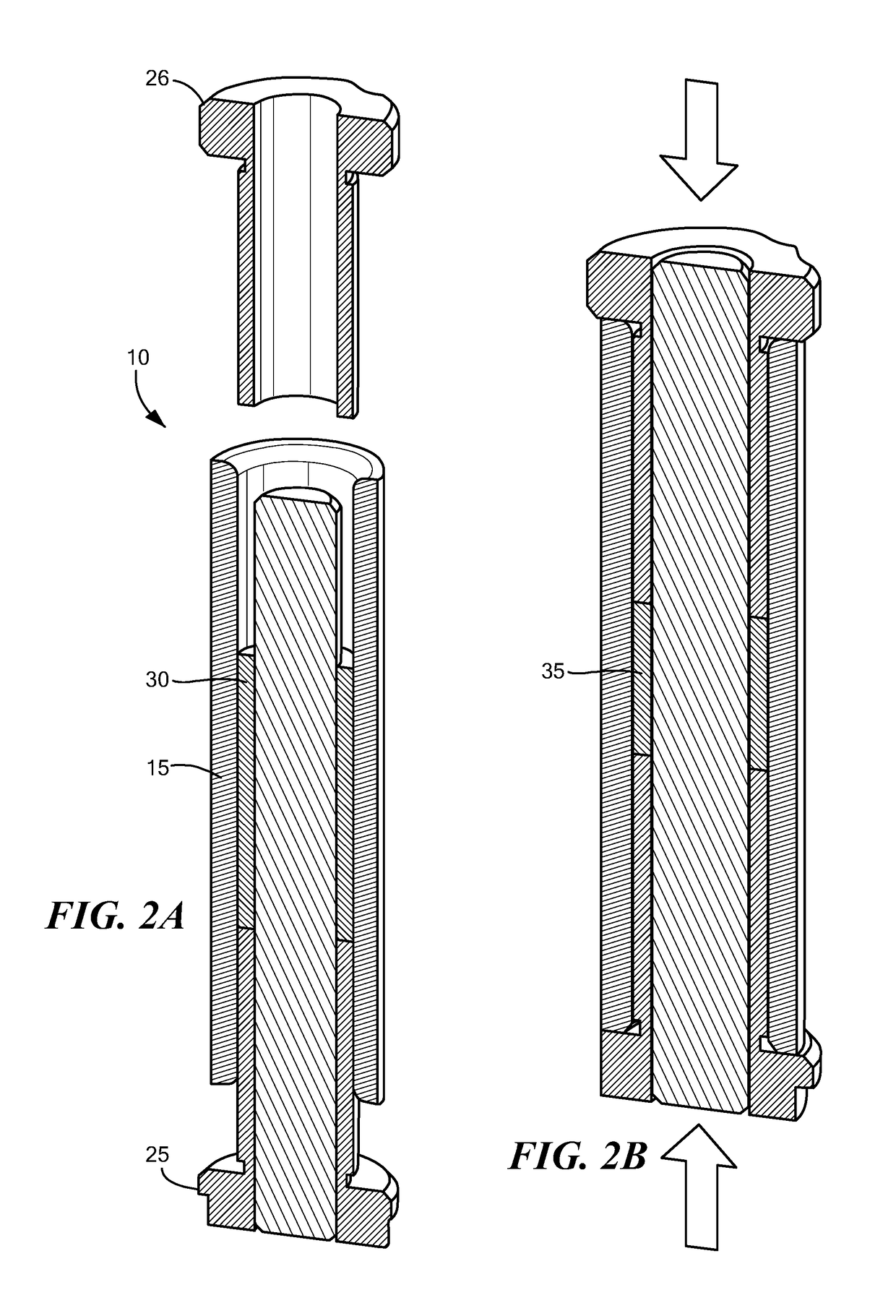Alkaline metal-air battery cathode
a metal-air battery, alkaline technology, applied in the field of electrochemical batteries, can solve the problems of low rate capability and susceptibility to environment conditions, zinc-air cells, and insufficient service on intermittent and high-rate tests
- Summary
- Abstract
- Description
- Claims
- Application Information
AI Technical Summary
Benefits of technology
Problems solved by technology
Method used
Image
Examples
example 1
[0156]PPS polymer was mixed with the ionic compound LiOH monohydrate in the proportion of 67% to 33% (by wt.), respectively, and mixed using jet milling. This undoped mixture can be extruded into a film or other shape prior to doping. A portion is extruded into a film to create an undoped film (of PPS and LiOH). DDQ dopant was added via vapor doping to the resulting mixture at a temperature between 250 and 325° C. for 30 minutes under moderate pressure (500-1000 PSI) to synthesize a solid ionically conducting polymer material (PPS / LiOH / DDQ). In an aspect, the solid ionically conducting polymer material PPS / LiOH / DDQ is synthesized in a particulate form by first mixing the DDQ dopant and base polymer PPS monometer. The ionic compound LiOH is added and the three component mixtures is heated between 250 and 325° C. to create the particulate form.
[0157]Electronic conductivity was measured using the potentiostatic method between blocking electrodes, and was determined to be abot 6.5×10−9 ...
example 2
[0164]An air cathode is made by mixing the solid ionically conductive polymer material prepared in Example 1 with electrically conductive carbon powder in desired proportion and compression-molded onto an electrically conducting (e.g. metal) current collector which is electrically connected to a positive terminal of the cell.
[0165]Air electrodes were prepared by mixing the solid ionically conducting polymer material with variety of carbons: TIMCAL SUPER C45 Conductive Carbon Black (C45), Timcal SFG6 (synthetic graphite), A5303 carbon black from Ashbury and natural vein graphite nano 99 from Ashbury (N99). Carbon content was varied from 15 to 25% wt. %. Cathodes were punched to fit a 2032 coin cell. Zinc foil was used as the anode. Non-woven separator was soaked with aqueous 40% KOH solution. Two holes were drilled in the coin top facing the cathode. Cells were discharged at room temperature using a MTI coin cell tester at a 0.5 mA constant current.
[0166]Cathode parameters and test r...
example 3
[0184]Ground poly(phenylene sulfide) polymer and lithium hydroxide monohydrate were added together in the proportion of 67% to 33% (by wt.), respectively, and mixed using jet milling. The resulting ion containing compound—polymer mix, manganese dioxide powder (EMD from Erachem) and C45 carbon black were added together in the proportion of 30%, 50% and 20%, respectively, and thoroughly mixed using a V-blender.
[0185]The V-blended mixture was placed into a heating container and heated to a desired heat-treatment temperature (305 to 345° C., or greater than 300° C., and between 250-450° C.) for a specified time (10-50 minutes). After cooling the resulting material was mixed with carbon. In an aspect the composition is 50% manganese dioxide, 20% Ketjenblack EC-600JD and 30% polymer / LiOH mix (by weight). In another aspect the carbon can comprise 10-30 wt % and manganese dioxide 40-70 wt %, with the balance the polymer, ionic compound and other additives.
[0186]The cathode resulting powder ...
PUM
| Property | Measurement | Unit |
|---|---|---|
| Temperature | aaaaa | aaaaa |
| Temperature | aaaaa | aaaaa |
| Fraction | aaaaa | aaaaa |
Abstract
Description
Claims
Application Information
 Login to View More
Login to View More - R&D
- Intellectual Property
- Life Sciences
- Materials
- Tech Scout
- Unparalleled Data Quality
- Higher Quality Content
- 60% Fewer Hallucinations
Browse by: Latest US Patents, China's latest patents, Technical Efficacy Thesaurus, Application Domain, Technology Topic, Popular Technical Reports.
© 2025 PatSnap. All rights reserved.Legal|Privacy policy|Modern Slavery Act Transparency Statement|Sitemap|About US| Contact US: help@patsnap.com



